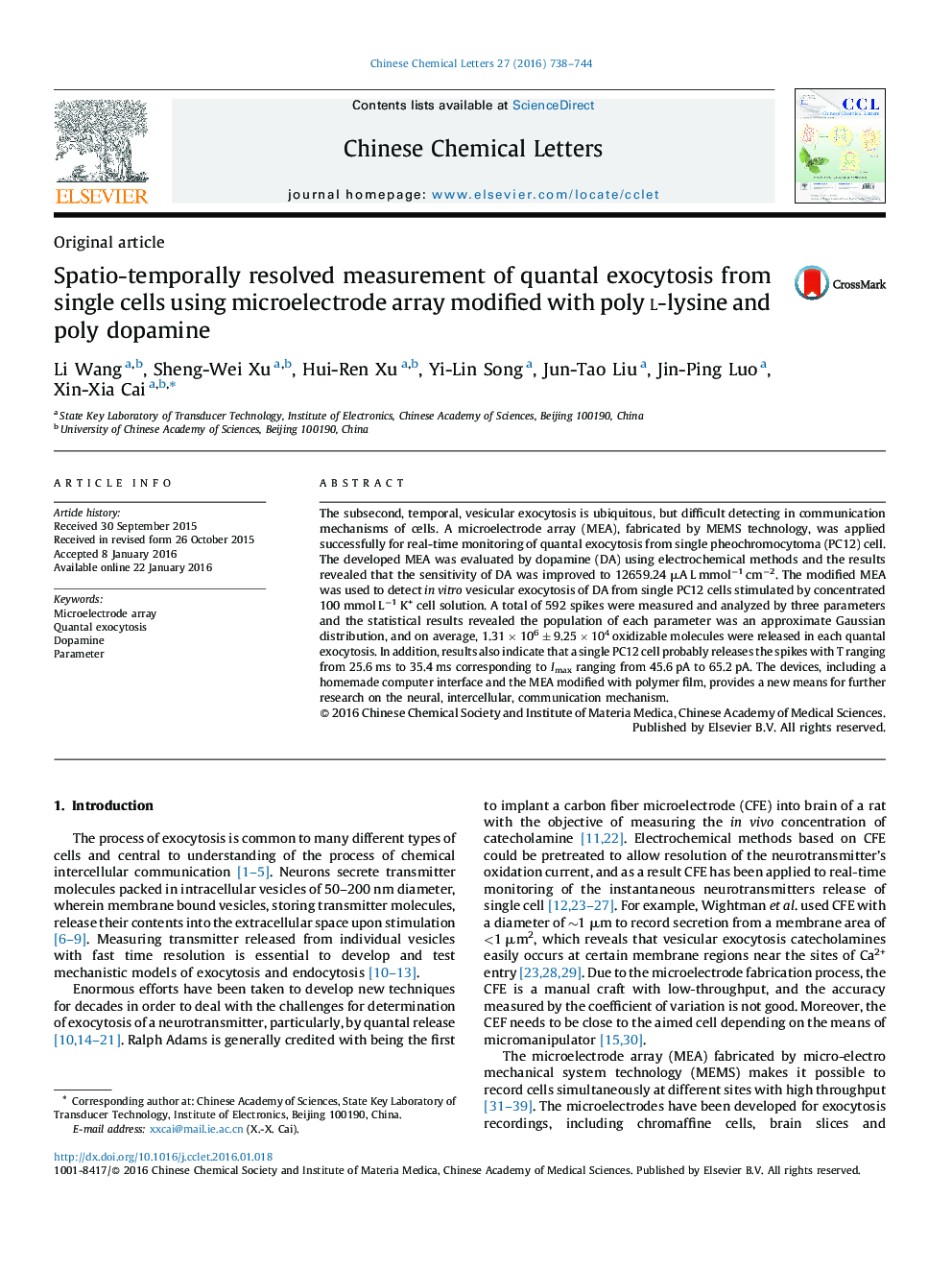| Article ID | Journal | Published Year | Pages | File Type |
|---|---|---|---|---|
| 1253976 | Chinese Chemical Letters | 2016 | 7 Pages |
The subsecond, temporal, vesicular exocytosis is ubiquitous, but difficult detecting in communication mechanisms of cells. A microelectrode array (MEA), fabricated by MEMS technology, was applied successfully for real-time monitoring of quantal exocytosis from single pheochromocytoma (PC12) cell. The developed MEA was evaluated by dopamine (DA) using electrochemical methods and the results revealed that the sensitivity of DA was improved to 12659.24 μA L mmol−1 cm−2. The modified MEA was used to detect in vitro vesicular exocytosis of DA from single PC12 cells stimulated by concentrated 100 mmol L−1 K+ cell solution. A total of 592 spikes were measured and analyzed by three parameters and the statistical results revealed the population of each parameter was an approximate Gaussian distribution, and on average, 1.31 × 106 ± 9.25 × 104 oxidizable molecules were released in each quantal exocytosis. In addition, results also indicate that a single PC12 cell probably releases the spikes with T ranging from 25.6 ms to 35.4 ms corresponding to Imax ranging from 45.6 pA to 65.2 pA. The devices, including a homemade computer interface and the MEA modified with polymer film, provides a new means for further research on the neural, intercellular, communication mechanism.
Graphical abstractA microelectrode array (MEA) fabricated by micro-electro-mechanical-systems (MEMS) technology was prepared for monitoring quantal exocytosis from single pheochromocytoma (PC12) cells.Figure optionsDownload full-size imageDownload as PowerPoint slide
